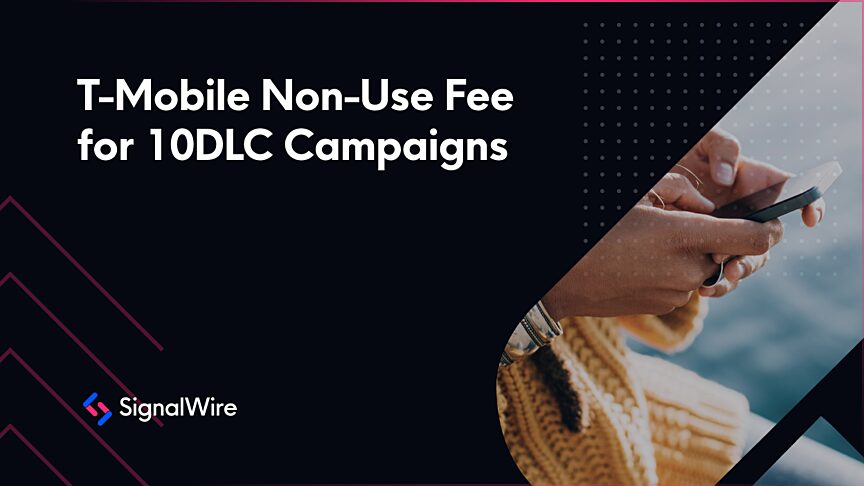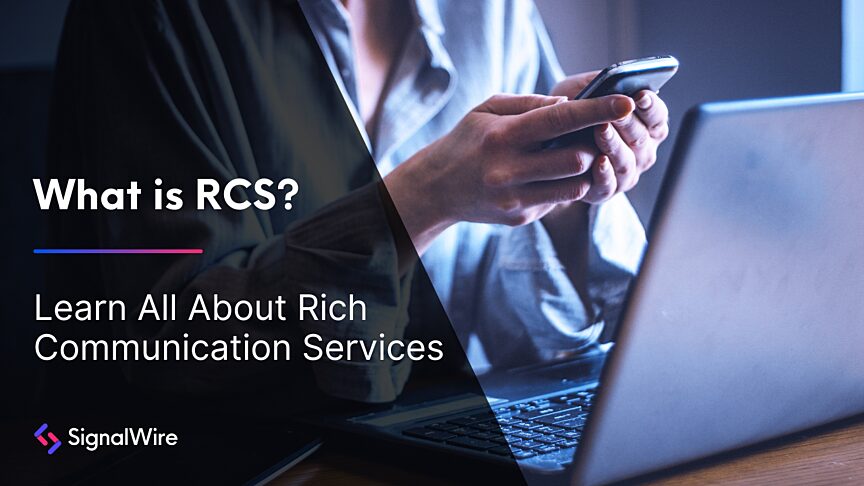If you’re a business that sends SMS messages, you’ve probably heard of The Campaign Registry. While it might seem complicated to navigate, you shouldn’t put off learning about it in order to prevent potential fines or deliverability issues. Luckily, with SignalWire, getting registered is simple and straightforward.
In this post, we’re going to walk you through what you need to know about The Campaign Registry and how SignalWire will help you through the process.
What is The Campaign Registry?
The Campaign Registry (or TCR) was created to regulate spam texts and opt-out options for customers. Under this new entity, all A2P 10DLC SMS message campaigns need to be verified prior to sending. This ensures that claims of what is being sent match messaging behavior and makes bulk messaging more secure.
Are there any exceptions for TCR?
If you’re sending messages exclusively outside of the United States, or you’re using toll free numbers or short codes, you don’t need to register with TCR. But these types of numbers still have their own approval processes that take much longer than TCR.
All use cases for application-to-person messages have to be registered, but if you’re wondering about your specific use case, you can refer to our detailed guide on standard use cases versus specialized use cases. We also have resources for registering the political use case.
Why should I care about TCR?
It is required by carriers to register, but registering is also generally good for your business. Since it was created to reduce spam and fraud, TCR increases trust and security in your brand and give your customers confidence that you aren’t spamming them. And because messages are less likely to be flagged or blocked by carriers, you’ll improve deliverability and throughput.
Registering also ensures you avoid penalties for not complying. You can get banned, flagged by carriers, or even fined up to $10 per message if you don't register.
How much does it cost?
Each brand registration fee costs $4, but other fees for your campaign will depend on your use case. You can verify pricing here.
How to Register a Campaign
SignalWire’s TCR wizard makes it as easy as possible to get registered and approved quickly, whether you’re registering your first campaign or your 1000th. If you know what your messages are going to say, the process of setting everything up will only take a few minutes (although getting approved will take a few business days). The process can be summed up in 3 steps. First, you’ll add your brand; second, you’ll register your campaign; third, you’ll assign phone numbers to that campaign.
To get started, log in to your SignalWire dashboard and navigate to Messaging Campaigns in the left-hand sidebar. Click the blue + button in the upper right corner to add a brand.
Add Your Brand
Your brand is the company or entity sending messages to its end users. Name your brand, enter your company name (these two may be the same), and list your industry. Provide relevant contact information and legal details - you’ll need a Tax ID (EIN). If you don’t have one yet, but you have a business use case for messaging, you can apply for one here.
We will then review your brand registration request. Usually this will be approved within one business day (when I submitted this test brand, our team reached out within 30 minutes). You can proceed with registration of the campaign while you wait.
Register Your Campaign
Name the campaign and provide as much detail as you can in the description. It needs to be at least 40 characters - be as clear and concise as possible, and select the appropriate use case. Include the type of business, what kind of messaging you plan on sending, the context of your messages, and who your subscribers are.
Then let us know if you are going to use number pooling, which will only be the case if you need more than 49 phone numbers for your campaign. Describe your message flow, and enter the templates your messages will follow. We need at least two, but you can add more if you’ll have several.
Add opt-in/opt-out messages, help messages, and keywords to trigger these messages. Then select any relevant legal information about your campaign. If you're unsure about how to write these messages, and you'd like more details and examples on how to provide the best samples, descriptions, and opt in/out language possible, check out our tips for getting your campaign successfully registered.
It will usually take around 3-5 business days for your campaign to get approved. We’ll be in contact to let you know the status of your campaign. You can view its status at any time in the Messaging Campaigns Dashboard for all your brands and campaigns.
Assign Phone Numbers
Meanwhile, you can assign phone numbers to your new campaign. If you don’t have any 10DLC numbers yet, you can purchase some directly here. Select a campaign to add them to, and select ‘add’ to turn your purchased number into an assigned number.
You can follow the progress on the Messaging Campaigns Dashboard, which will tell you if your phone numbers are pending or active. Our team will also reach out to you when you’re all set.
If you have questions about the 10DLC registration process, check out our guide to navigating the Campaign Registry and our TCR FAQ. If any issues persist or you need help with any step of the process, don’t hesitate to submit a ticket to our support team by clicking the ? Help button on the top of your dashboard, or bring your questions to our community Slack! Get started for free today with our platform free trial.


